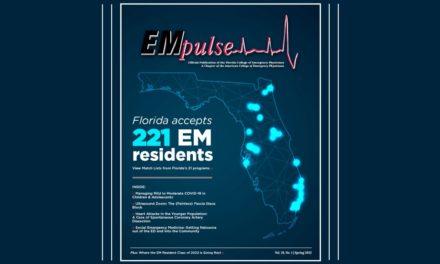Leveraging AI to Improve Patient Safety in the Emergency Department
Just three diagnostic errors account for nearly 75% of all serious harm to patients. Misdiagnosed cancers, vascular events, and infections accounted for this and $1.8 billion in malpractice payouts.
Why are diagnoses missed?
A 2020 study by Newman-Toker, et al. identified that 15 diseases account for about half of all serious misdiagnosis-related harms. [7] The research focused on the “Big Three” categories of vascular events, infections, and cancers and found that 10% of patients with a “Big Three” disease are misdiagnosed.
A likely explanation for this result is that practitioners encounter these conditions infrequently, are not familiar with the variable presentations, and are prone to cognitive errors in the diagnostic process.
These diseases require a consistent, thorough evaluation that focuses on the history and exam’s diagnostic features that should prompt the practitioner to include the condition in the differential diagnosis. The authors of this study concluded succinctly that their findings allow us to “target diagnostic improvement initiatives to diseases with the highest error and harm rates.”
Additional studies outline the failure to diagnose profile demonstrates omission of elements in history taking, physical exams, and medical decision-making.
Reducing Diagnostic Error
Leveraging 30 years of data into the root causes of the failure to diagnose, Nuance partnered with The Sullivan Group to develop ED Guidance for Dragon Medical Advisor, an AI-based decision support tool. ED Guidance for Dragon Medical Advisor specifically targets the most common diagnosis-related errors.
ED Guidance for Dragon Medical Advisor drives clinical alignment around elements in the history, physical exam, and medical decision-making that improve diagnostic certainty. Additionally, the algorithms help identify possible high-risk conditions and passively notifies the practitioner of a “Risk Identified.” Importantly, ED Guidance for Dragon Medical Advisor also fits comfortably within the practitioner workflow. This real-time clinical feedback helps physicians avoid medical errors before they become an adverse event or malpractice claim.
For the last 30 years, I have taught risk and safety to 4,000 medical directors and tens of thousands of emergency practitioners. While I enjoy lecturing, unfortunately, it does not lead to a sustained change in clinical practice that keeps patients and providers safe. Utilizing AI allows us to bring these risk and safety elements to the bedside. Since wrong or delayed diagnoses cause more wrong serious harm to patients than any other type of medical error [6], leveraging AI is the most promising way to reduce diagnostic error.
This article was sponsored by Nuance Communications.
References
- Makary M, Daniel M. Medical error – the third leading cause of death in the US. BMJ. 2016;353:i2139.
- Newman-Toker DE. Diagnostic value: the economics of high-quality diagnosis and a value-based perspective on diagnostic innovation. Modern Healthcare Annual Patient Safety & Quality Virtual Conference; June 17, 2015.
- Nearly 1 in 6 Docs Say They Make Diagnostic Errors Every Day. Medscape. Sep 10, 2019.
- Emergency Department Benchmarking Alliance. 2018 Annual Report. Madison, WI: EDBA. Published November 2019.
- Sklar DP, Crandall CS, Loeliger E, Edmunds K, Paul I, Helitzer DL. Unanticipated death after discharge home from the emergency department. Ann Emerg Med. 2007;49(6):735-745. doi:10.1016/j.annemergmed.2006.11.018.
- Tehrani A, Lee H, Mathews S, et al. 25-year summary of US malpractice claims for diagnostic errors 1986-2010: An analysis from the National Practitioner Data Bank. BMJ Qual Saf. 2013;22(8):672-680. doi: 10.1136/bmjqs-2012-001550.
- Newman-Toker DE, Schaffer AC, Yu-Moe CW, et al. Serious misdiagnosis-related harms in malpractice claims: The “Big Three” – vascular events, infections, and cancers [published correction appears in Diagnosis (Berl). 2020 May 16]. Diagnosis (Berl). 2019;6(3):227-240. doi:10.1515/dx-2019-0019.
This article is part of the following sections:








